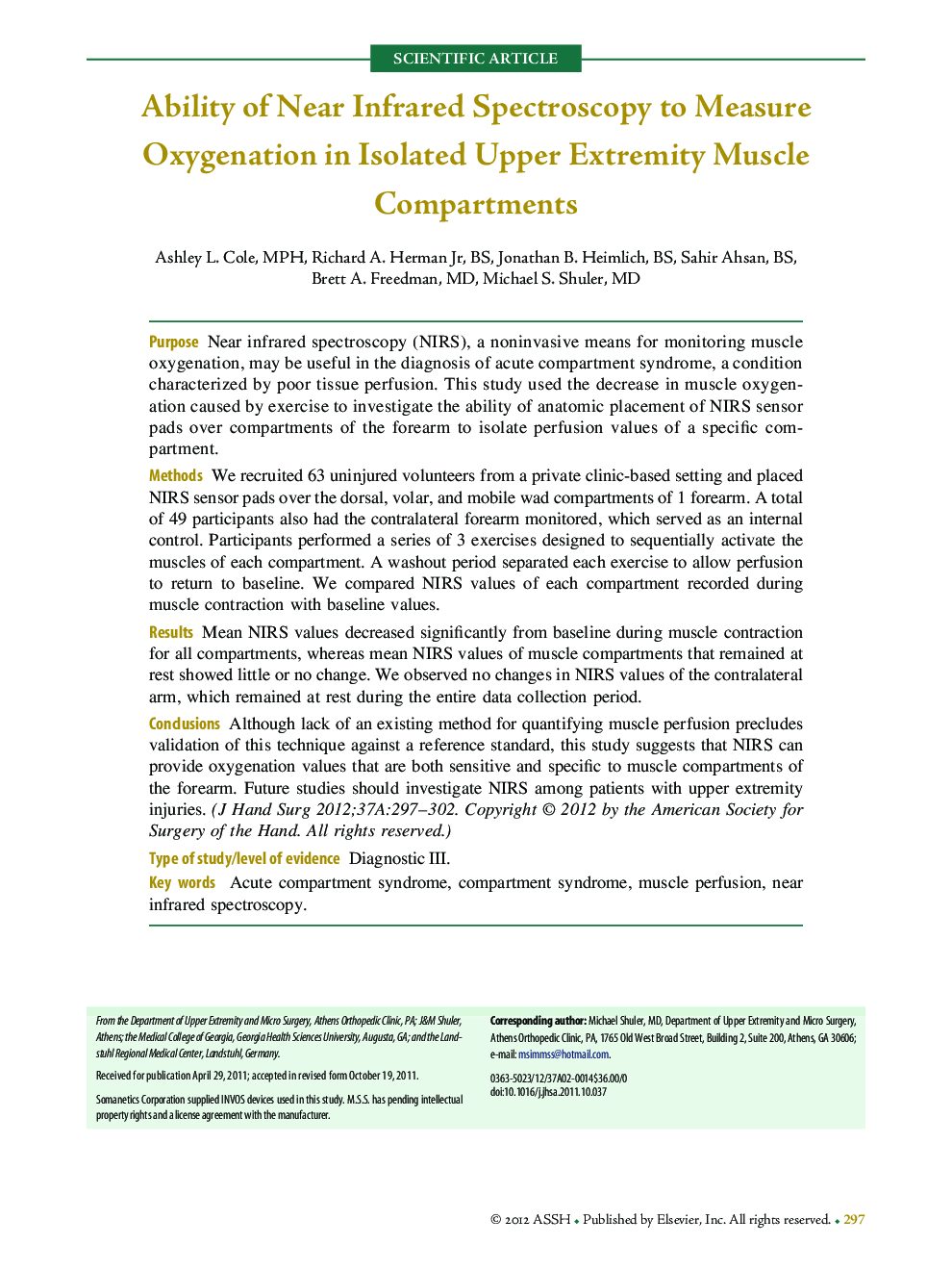| Article ID | Journal | Published Year | Pages | File Type |
|---|---|---|---|---|
| 4068930 | The Journal of Hand Surgery | 2012 | 6 Pages |
PurposeNear infrared spectroscopy (NIRS), a noninvasive means for monitoring muscle oxygenation, may be useful in the diagnosis of acute compartment syndrome, a condition characterized by poor tissue perfusion. This study used the decrease in muscle oxygenation caused by exercise to investigate the ability of anatomic placement of NIRS sensor pads over compartments of the forearm to isolate perfusion values of a specific compartment.MethodsWe recruited 63 uninjured volunteers from a private clinic-based setting and placed NIRS sensor pads over the dorsal, volar, and mobile wad compartments of 1 forearm. A total of 49 participants also had the contralateral forearm monitored, which served as an internal control. Participants performed a series of 3 exercises designed to sequentially activate the muscles of each compartment. A washout period separated each exercise to allow perfusion to return to baseline. We compared NIRS values of each compartment recorded during muscle contraction with baseline values.ResultsMean NIRS values decreased significantly from baseline during muscle contraction for all compartments, whereas mean NIRS values of muscle compartments that remained at rest showed little or no change. We observed no changes in NIRS values of the contralateral arm, which remained at rest during the entire data collection period.ConclusionsAlthough lack of an existing method for quantifying muscle perfusion precludes validation of this technique against a reference standard, this study suggests that NIRS can provide oxygenation values that are both sensitive and specific to muscle compartments of the forearm. Future studies should investigate NIRS among patients with upper extremity injuries.Type of study/level of evidenceDiagnostic III.
